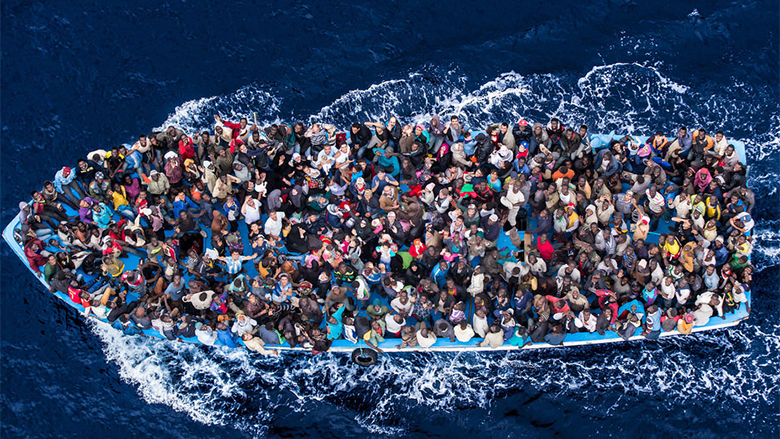1. What is forced displacement and why is it a crisis?
Forced displacement refers to situations of persons who leave or flee their homes due to conflict, violence, persecution and human rights violations. Globally, there are now almost 20 million refugees, and millions of internally displaced persons – and most are hosted in developing countries.Without a clear end in sight of the conflicts that are the main drivers of displacement, this crisis is expected to worsen. Displacement is also protracted, spanning years in many cases. Only 126,800 refugees were able to return to their home countries in 2014 – the lowest number in 31 years.
2. Aren’t these people migrants, moving to find economic opportunities?
It’s important to recognize the difference between economic migrants and the forcibly displaced. A migrant chooses to leave home in search of economic opportunities, usually moving to countries where their skills are in demand to contribute to the economy and increase their earnings. The forcibly displaced are fleeing from conflict, violence, or other peril, in search of security and livelihoods. They often experience trauma, do not have assets and are left in limbo, ending up in destinations where there is no opportunity to work.
3. We hear a lot about “climate migrants.” Isn’t this a concern, as the world works to address the impact of climate change? What about people forced to move by natural disasters?
Environmental change has always been a driver of human mobility, but there is growing evidence that climate change, disasters and other environmental factors are likely to play an increasingly important role in influencing migration, particularly in the developing world. This is expected to affect all forms of migration in Africa. Various studies have come to the conclusion that environmentally-induced scarcity of resources, in combination with socio-economic, political, and institutional vulnerabilities can lead to fragility, creating conditions that may lead to large-scale migration. This is why the World Bank’s regional initiatives and other investments in the Sahel, the Great Lakes, and the Horn of Africa aim to build resilience.
4. Isn’t this a humanitarian emergency, given the urgent need for help?
Displacement causes tremendous human suffering and is certainly a humanitarian concern as care and maintenance often are the immediate priority. It is also recognized as a development challenge, especially in protracted situations given the significant socio-economic impact on the forcibly displaced as well as their host communities and countries, and places of origin. The majority of refugees are from and are hosted in developing countries, as are internally displaced persons, presenting a challenge particularly for the extreme poor and vulnerable including youth, women and children. The World Bank is currently preparing analytical work on forced displacement as a development issue to improve knowledge in this field.
5. Won’t development programs for the displaced discourage them from returning home?
The displaced often live without opportunities for prolonged periods of time, pushing them further into poverty. The World Bank’s own experience tells us that when the displaced are offered solutions to restore some normality to their lives and be self-reliant, they are better able to contribute to their host communities. They are also better prepared to return home when the situation there improves.
6. What is the World Bank Group doing to help the globally displaced?
The World Bank Group is concerned about the welfare of the forcibly displaced as well as their host communities and countries which are often low-income countries themselves. As a development institution committed to ending extreme poverty and promoting shared prosperity, the Bank is providing support at the global, regional, sub-regional and country levels through data and analytics, development projects and programs and innovative financing approaches.
Specifically, the Bank is:
· Strengthening collaboration with the United Nations, governments, regional organizations and other partners over the medium and long term to target root causes of conflict and displacement in places like the Middle East and Africa’s Great Lakes, Sahel and Horn regions.
· Helping internally displaced persons rebuild their lives, access jobs, improve infrastructure in host communities, or return home in Azerbaijan, Pakistan, Democratic Republic of Congo, Africa’s Horn and Great Lakes regions, and other areas.
· Developing innovative financing options to help meet the costs of education, skills-building, and generating jobs.
· Undertaking data collection and analytical work focused on displacement in the Great Lakes, Horn and Sahel regions of Africa; the welfare of refugees, internally displaced persons and host communities including poverty analysis of Syrian refugees. Evidence-based assessments on the impacts of forced migration on development, and host country policies towards refugees such as the freedom to move, work, access, land is also being supported.
Last Updated: Apr 06, 2016
